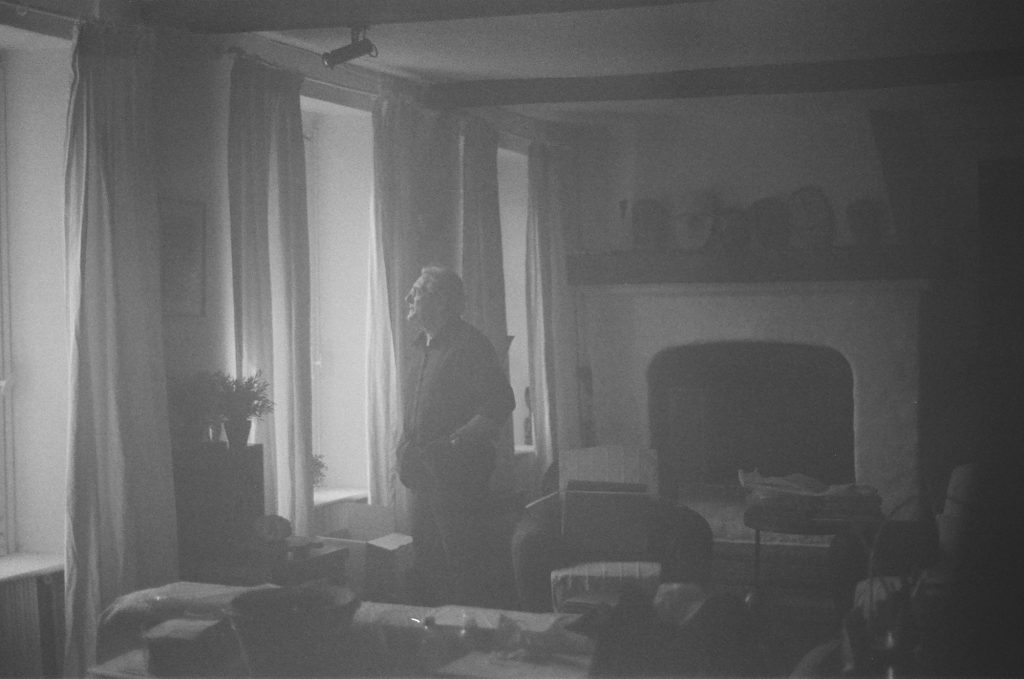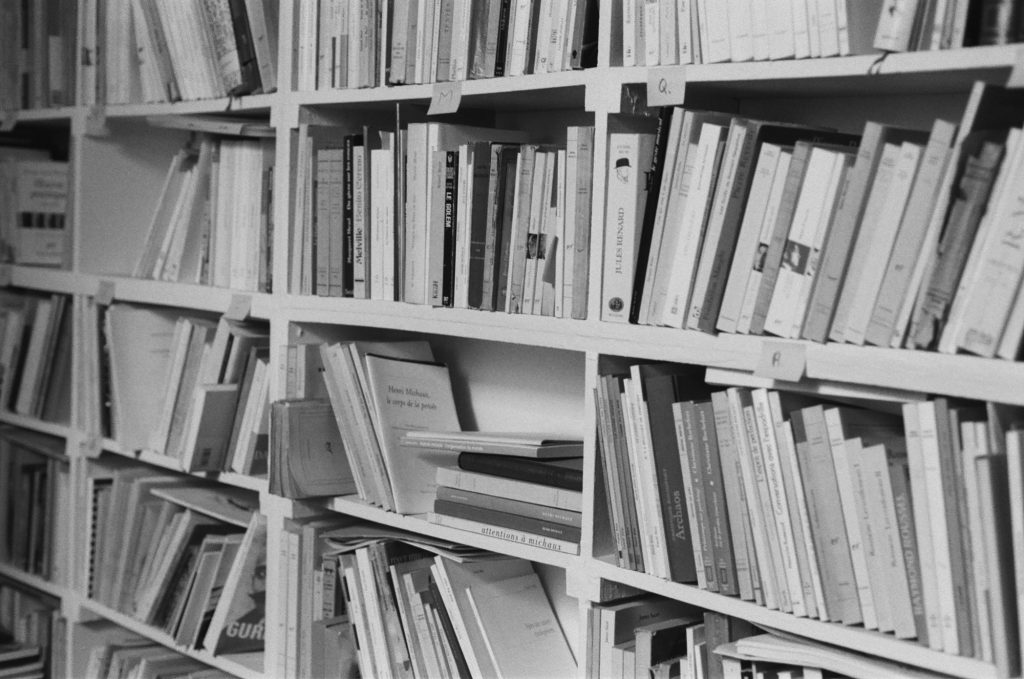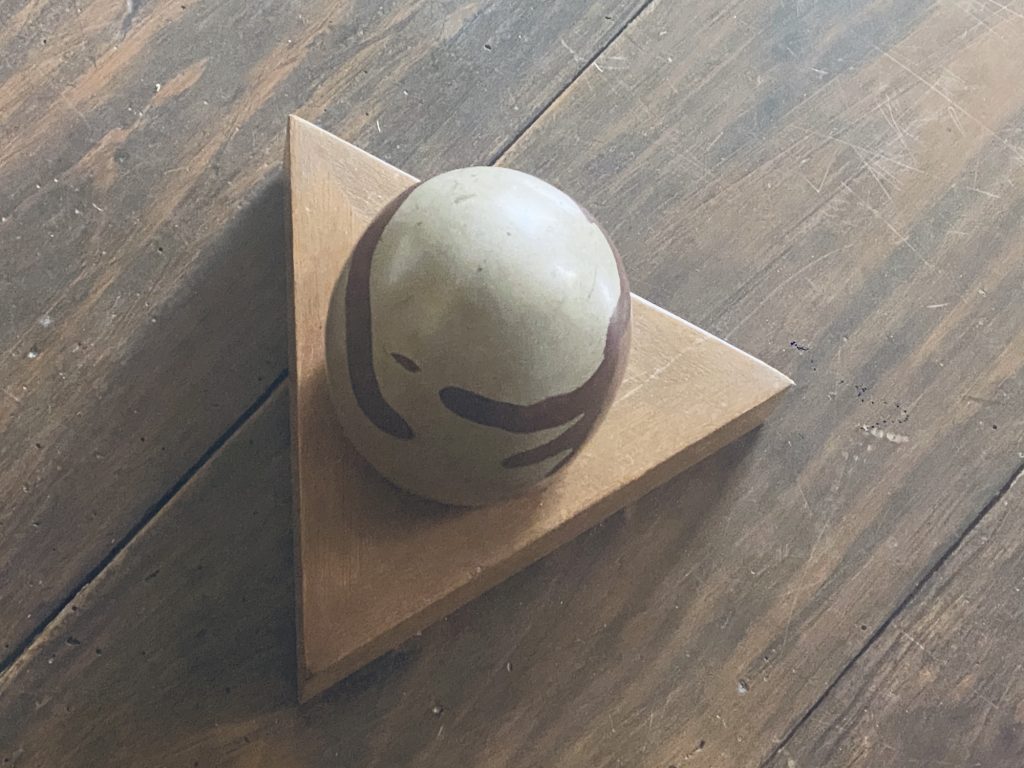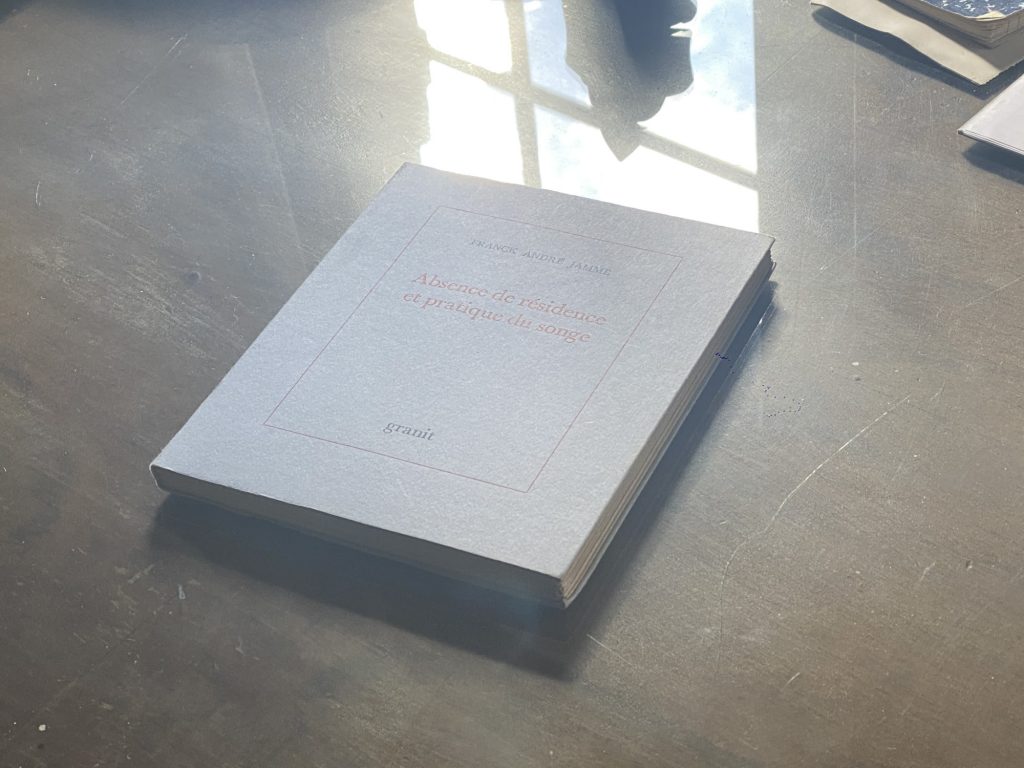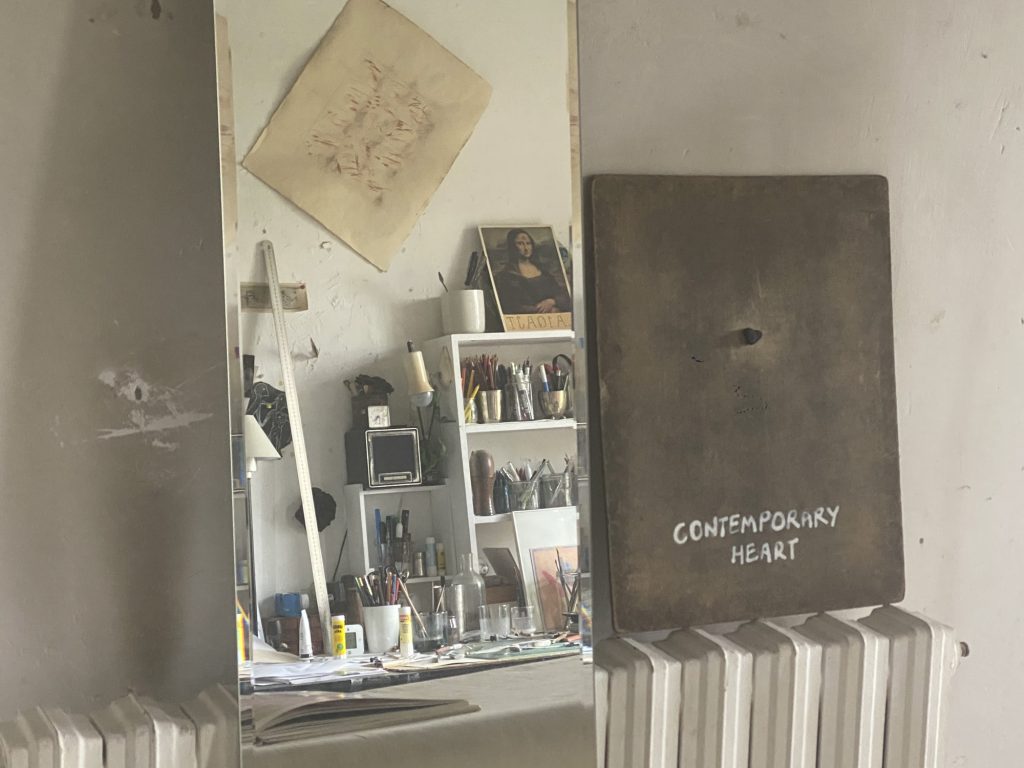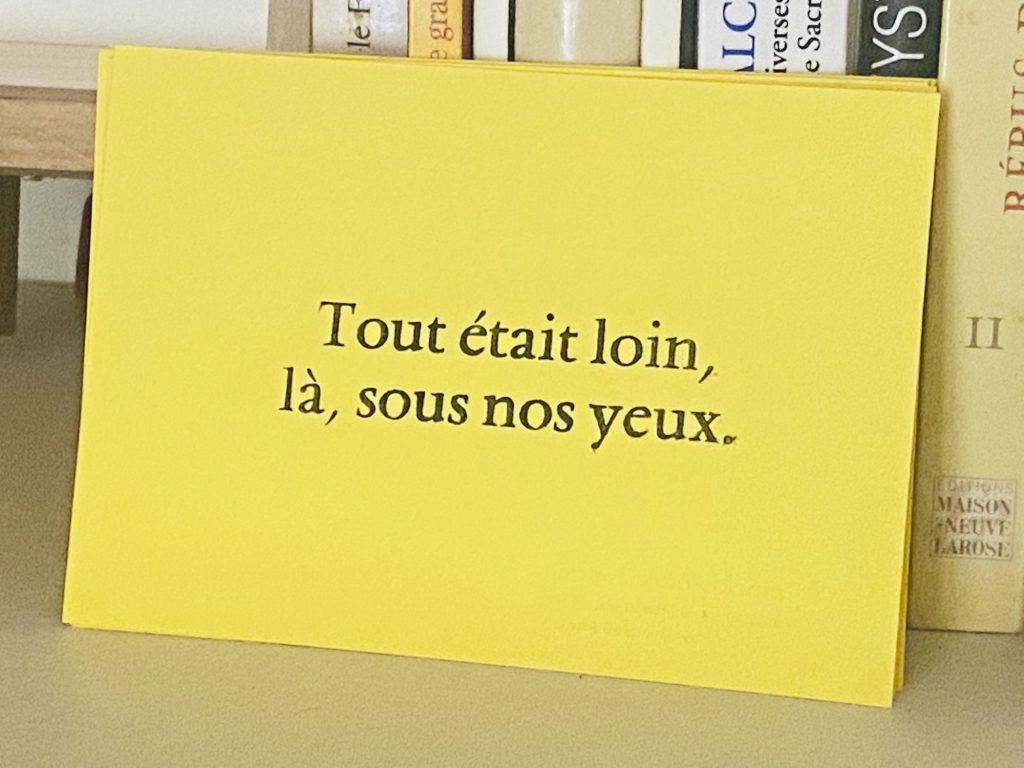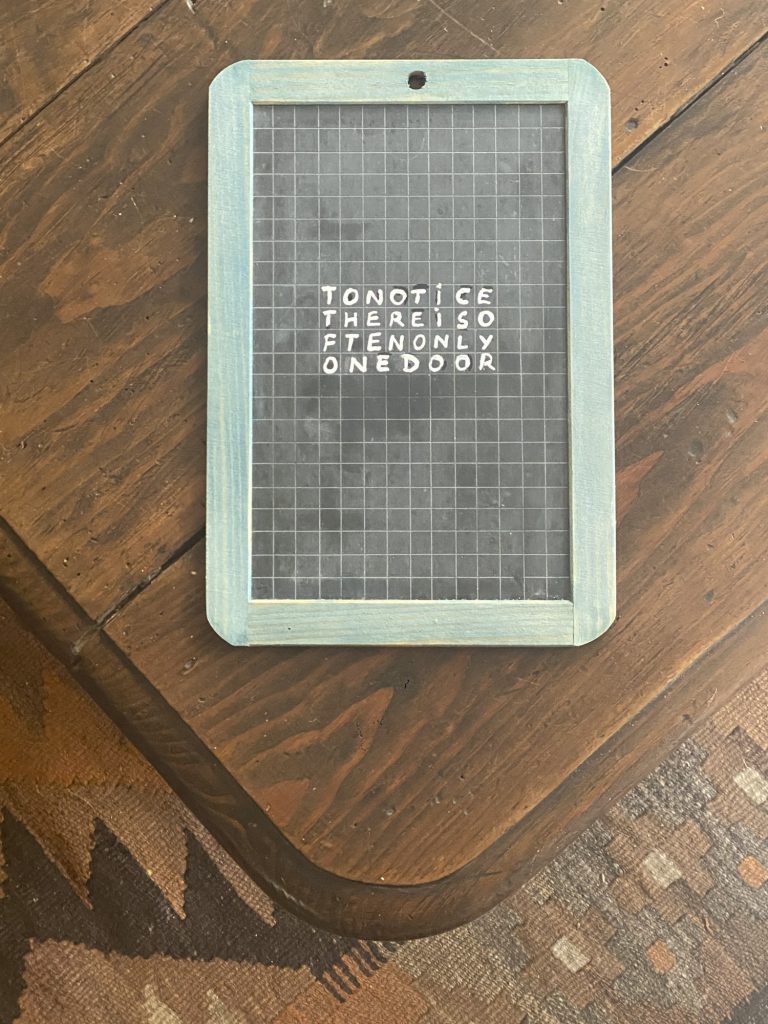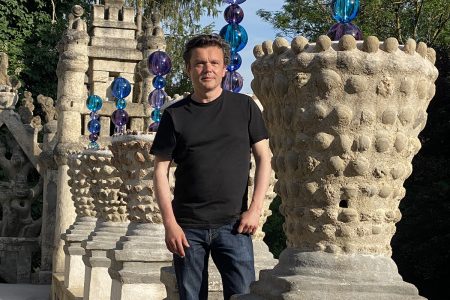
Franck André Jamme: Only This Glow Remained
Franck André Jamme gives us access to sacred sanctuaries, close to the hidden core of things — to the divine roots of words themselves.
There are words that glow like phosphorus when polished. Franck André Jamme polishes words with such sensitivity to subtle changes in their luminosity, that a given sentence varies elusively in nuance, like a jewelled mosaic. He takes us through oneiric depths, through multiple layers and levels of consciousness. If we are willing to be guided, he gives us access to sacred sanctuaries, close to the hidden core of things — to the divine roots of words themselves. Acclaimed by Edmond Jabès, Henri Michaux, and René Char, and translated by John Ashbery, Jamme published numerous poems and fragments, as well as multiple limited-edition illustrated books. A specialist of Indian Tantric, Brut and Tribal art, he was also praised for his work as an international curator. His engagement with India was a particularly transformative path along his way to transcendence, and, ultimately, to serenity.
I DON’T KNOW IF WE REALLY FINISHED OUR INTERVIEW. I HAVE SOME DOUBT. WE MAY NEED TO TALK AGAIN.
I received this block-capitals message in an email on the 10th of September, the day after I visited Jamme at his home in Burgundy. We had talked about continuing our interview at a later date. On the 1st of October, he tragically passed away. Therefore, one must consider the following conversation as unfinished.
TLmag: You have a particularly strong affinity with words, with language.
Franck Andre Jamme: From morning to night. I studied philosophy at an early age. I was taught by a professor whose teachings were between Heidegger and Wittgenstein – he even translated some of Wittgenstein’s texts. He was great. Inspiring.
TLmag: Ludwig Wittgenstein was known to have had a primary focus on the philosophy of language: lending himself to ‘word-play’, and notions of ‘language-games’. This makes me think about your series of poems entitled, New Exercises, and how you visually ‘play’ with words and letters, creating what appears to be coded texts.
FAJ: I definitely played a game with these. It amused me to watch these little things appear and then to take time to decipher them afterwards. They demand a ‘slow-reading.’ You need to take time. It slows the world down a bit.
Tlmag: You previously hand-wrote the complete book of these poems out onto little mirrors and, more recently, onto little blackboards.
FAJ: I started by writing them on reflective surfaces, like on golden foil that I found wrapped around chocolates or inside packets of cigarettes; and then I sent them to friends. Afterwards, I wrote the whole book out onto mirrors. They were shown at Galerie du Jour/Agnes b. in Paris some time ago. Eighty-one mirrors shown in a single line of seventeen meters. You are in front of a mirror. But when you start reading the text, your face disappears. You don’t see yourself anymore.
TLmag: Because of the change in focus…
FAJ: Yes, and so you disappear. For once, you know. It can be so beautiful to disappear.
TLmag: I suppose that the mirror here can symbolically reflect the omnipresence that language has held for you in your life.
FAJ: It is the only thing that I believe in: I believe in language, in language itself, like that – nude. I don’t have gods or… no, it is not for me. Too big a concept. I have read a lot about the history of religion, but I am not so interested by this big thing that is so much more powerful than we are, who will decide so many things. This idea doesn’t work for me. Language is not as dominating. If you are lucky and a bit gifted, from time to time you can at least experience a new sort of ‘flavour’ that is near to the limit of the human potential. Even for a moment.
TLmag: Have there been any moments you can recall that have particularly affected your creative destiny as a writer?
FAJ: Earlier on, yes. I started to write from a young age and had extracts of two books published in quite established magazine reviews. But suddenly, I fell into a little hole in my life. I couldn’t do it anymore, I couldn’t write. So, at this same time, when I was around 20, I realized I had in fact become quite ill. I stopped writing for myself. I became a music journalist instead. Fortunately, I loved music. I still do. You know I used to sing soprano in a choir. It was only when I was around 30 that a little miracle happened.
TLmag: Pray, tell…
FAJ: A friend of mine came for an informal dinner at my home. She arrived with this gift, a transparent bag full of water, and inside, a fish. And, in the other hand, a bowl. I was totally mesmerized by the thing. This little animal. This fish. So, I wrote something suddenly – like that, in no time – called “Flame in Water”. And after this, I decided to try to write again, and I have not stopped since. I wrote very few things, but year after year, it started to make a good number of books, I suppose.
TLmag: Have you always tended to write “like that, in no time”?
FAJ: I have never written every day. I quickly published this poem about the fish in 1979 and then my next book came out in 1981. I wrote Un diamant sans etonnement (A Flawless Diamond) over the space of one night. I wrote it automatically. I wrote it, I fell asleep, I woke up, I reread it and I truly asked myself what I had done to write something like that. I was not even sure that it was myself who had written it. I like it because it’s a strange text. And you cannot do that sort of thing twice. It happens once, then it is finished. It is so unique this type of thing.
TLmag: Automatic writing – the ability to produce written words without consciously writing… where do these words arise from? Subconscious, spiritual or supernatural forces? Those drawings over there, are they the Hill Korwa drawings? They appear very calligraphic. How do these ‘drawings’ translate to this idea of ‘automatic ‘writing’?
FAJ: Yes. They are magical. I have been very touched by them. I first discovered them during a visit to a small, poor museum in Bhopal in Madhya Pradesh. I noticed a couple of papers covered with these drawings on the ground in a corner of a room. I asked what they were, but no one knew. I went back the next day to find out, and I was told that an Indian anthropologist had brought them back from the ‘Korwas’ some years before. The Hill Korwa were a very small tribe. A small tribe of hunters with their bows and arrows. Completely illiterate. For them, writing was not a tool to communicate with. No customary draperies. They were just dreaming of writing. Can you imagine? ‘I am dreaming of writing.’ Just that. So beautiful.
TLmag: Can you imagine the Surrealists discovering them?
FAJ: Oh, yes. Breton was a good communicator; he would have made them famous. This was for Andre Breton. Perfect, five stars.
TLmag: You have travelled many times to India. Let us circle over to these extraordinary abstract Tantric paintings that you are known for introducing into the West. How did you discover them?
FAJ: I first discovered them through literature. Originally, it was at a bookshop in Paris where I found a small gallery catalogue about an exhibition that had been held some years before. The catalogue opened with two texts: one written by Henri Michaux, the other by Octavio Paz. I discovered something existed in India that was totally abstract, with such simple shapes and symbols, inside such a baroque culture. I absolutely wanted to know more about this Tantric art. But I realized that there was next to no information published about the meaning of these paintings. So, I decided to go to India in search of them. But the first few trips were unsuccessful. It took twenty years for us to find each other.
TLmag: Why so little information?
FAJ: Because of bad climate conditions, monsoons, rats, insects, careless conservation… not many survived. Certainly, some of these paintings did exist before the 17th century, but we don’t have proof of that. And, even the Indians don’t have real access to Tantrism itself. It is a kind of small secret society in Hinduism. All is enriched by secrets and a hidden world.
TLmag: Tantrism, as it is known in the West, has been used in quite diverse ways throughout history to mean various things for different people. It defies easy definition.
FAJ: Tantrism is so deep. And, yes, it is not very well understood in the West. Because, as usual, Westerners think about the parts of it, which often have a close relationship with sex or eroticism. This is a very important point: a body of thought that has cosmic sexuality included at its own heart. But there are so many other parts to it. There is a main part of it about language. The mantras. The Tantrikas are the kings of mantras. This became so interesting for me. Because of the language.
TLmag: I have read that the ‘way of Tantra’ involves a highly individuated personal research enquiry: a personalised ontological journey. Essentially, each person finds her or his own ‘way’.
FAJ: You know, I was very lucky. Because a terrible thing happened to me on my way. On one of my research trips in India I was involved in a terrible road accident where the bus I was travelling in hit a lorry coming the other way. Around me, almost everyone died. And the irony of the thing is that I would not have had any access to the families who were making these little wonders without this accident. It opened another door.
TLmag:A very bloody door.
FAJ: A door, nonetheless. After the accident I was petrified of going back, but with the help of some friends in Paris, I decided to return three years later. A friend told me to go and see a soothsayer. A sort of guru. I met the man, and it was one of the strangest meetings with another human being I have ever had in my life. He looked like a fox. Really. A pure fox. I told him I wanted to continue my research, but I was so terrified to do so. He asked me to wash my hands in a large jar of sand. He stared at the patterns read the shapes in the sand, made by my hands. They do that in Africa also. It is a kind of divination.
TLmag: And then?
FAJ: And then he told me that I had paid my tribute to the deity, to the goddess. He told me I could go ahead with my research. But secretly. I could show these paintings in the West, but on two conditions. First condition, I could sell the pieces but only for enough to earn my own living, not to become rich. Second condition, he said when I would go to meet the families who were making this art, I must go alone or only with the one I love. He was standing at the door with a foxy smile and, just as I was about to leave, he wrote down two names and addresses on a little piece of paper, and kindly handed it to me. I truly thought that I was going to leave without what I was supposed to find. But he handed me the key. And I immediately went to the first address. And so, it began like that.
TLmag: Can you expand on the creation of these paintings?
FAJ: They were originally illustrations that accompanied hand-written manuscripts. Over time, they were copied out separately from the texts. Their purpose was to be used as tools to meditate, to connect with cosmic forces in the larger universe. It is important to remember that they are made anonymously by people who would not describe themselves as artists. They do not think for a minute that they are artists.
TLmag: Not artists?
FAJ: No. They are just continuing the tradition of the family. What is so inspiring to me is that if I send them a commission for a piece, I sometimes receive it one year later. There is absolutely no rush for them to receive money quickly. And I love that. I really love that. It is very important for me. They do not react quickly at all. Another thing that inspires me – this is not at all a patriarchal tradition. There are so many women painting these pieces. And this is so rare in India. As they are anonymous, we would never know this.
TLmag: They are so akin to poetry. Visual poetry. I am interested in the actual spark of creative transmission. These simple geometric shapes: ovals, squares, circles, triangles. The choice of colours…
FAJ: They paint them according to an endless schema, constantly repeated and passed on from generation to generation in each family. Like a raga in their music – you start with the scale and then improvise. You have five or six notes for one raga, but you can play it as you like. You just need to respect the original five or six notes. They do not vary too much.
When they make these paintings, it is also very much like Indian music – it depends very much on a feeling at a certain moment, on their inside mood. They are not going to paint a very powerful and red image if they are in a breezy mindset, if you know what I mean. It is an inner gesture each time.
TLmag: “Never in the universal history of painting,” you once wrote, “have works been produced that are both so mysterious and simple, so powerful and pure… a bit as if, with these works, man’s genius had been able to assemble almost everything in almost nothing.”* They are jarringly affective.
FAJ: They are. They vibrate. A Shiva Linga on fire. So full of energy, it is burning.
TLmag: Curiously, I do not see one of them exhibited here in your house.
FAJ: It is funny, but yes, I do not have a single piece on my walls. Because I have been very prudent with these pieces, you know. In a sense I do not want to show them too much. And certainly, I do not want to see them too much. In a very strange way, I do not like the idea of possessing them. They are much stronger than me. They could possess me, but I could not possess them. I do my best for them. They know that I have done my best for them, for a long time now. They are friends. Maybe I need their energy. Perhaps they could help. Nevertheless, I am so happy to have met this art. You have no idea how truly happy it has made me.
Franck Andre Jamme : his poetry and fragments: in Moon Wood (Selavy Press, 2000); Extracts from the Life of a Beetle (Black Square, 2000); The Recitation of Forgetting (Black Square, 2003); Another Silent Attack (Black Square/Brooklyn Rail, 2006); New Exercises (Wave Books, 2008). He is one of the authors of The Yale Book of French Poetry, 2004. His illustrated books with Jaume Plensa, James Brown, Zao Wou Ki, Marc Couturier, Suzan Frecon, Yang Jie Chang, Olivier Debre, Acharya Vyakul, Philippe Favier, Leonie Guyer.
Specialist and curator of contemporary Indian Tantric, Brut and tribal arts: for the landmark exhibition Magiciens de la Terre at Centre Pompidou, Foundation Cartier and Galerie du Jour/Agnes b., Paris, the CCA and Meridian Gallery, San Francisco, Feature Gallery, The Drawing Centre and Lawrence Markey Gallery, NYC.
For his life work, he received in 2005 the Grand Prix de Poesie de la Société des Gens de Lettres.
